 For a lot of years, whenever I thought about standardized tests, I only thought about how much I sucked at them. The difference between my strong grades and my weak standardized test scores was dramatic. My low standardized test scores cost me early academic opportunities, scholarship money and self-confidence.
For a lot of years, whenever I thought about standardized tests, I only thought about how much I sucked at them. The difference between my strong grades and my weak standardized test scores was dramatic. My low standardized test scores cost me early academic opportunities, scholarship money and self-confidence.
But now that I’ve been professionally successful for a few decades, I’ve been thinking about those tests in a different way.
The primary reason I was lousy at standardized tests was that I was always running out of time, and being forced to randomly fill in answers at the last moment. More to the point, I was running out of time was because I couldn’t stop thinking about things unrelated to standardized test problem-solving.
While reading through questions, I’d continually think about all kinds of extraneous things:
- “Why did the test makers word it that way? Wouldn’t it have been more clear if they had said…(composing in head)?”
- “What is it about me that makes me a crappy test taker?
- “Why do test makers think that particular kind of question is a reasonable indicator of future success? Are they right?”
- “Why do they need to time tests? Is life like Jeopardy where you have to buzz in the fastest?”
- “Why a #2 pencil? What do the numbers even mean? Is there a good reason for that, or is it a control thing? Would they really throw me out I snuck in a rebel pencil?”
Why? What? How? You don’t need to be Stanley Kaplan to understand how this kind of frivolous intellectual meandering hurts standardized test performance. Every moment I was diverting thoughts to those kinds of questions is obviously a moment I wasn’t solving problems.
But I couldn’t stop myself. Today they might say I had inattentive type Attention Deficit Disorder. In those days teachers said I was “dreamy” or “spacey,” and they were correct. I was more successful in the classroom, where time was much less of an issue and different things were evaluated, but my off-topic musing was devastating when it came to tightly timed standardized tests.
Weakness Becomes Strength
But in later years, I’ve had an epiphany of sorts about all of this: It occured to me that the thought processes I was using when I should have been focused on the standardized test is precisely the kind of thought processes that has made me successful on a professional level. I get hired because people say I’m analytical, creative, unconventional, curious about a wide variety of subjects, a persuasive writer, and can put myself into others’ heads.
In other words, if I had been better at the things that made me a poor standardized test taker, I might have stunk at my chosen career.
Ban Standardized Tests?
The realization that standardized tests weren’t entirely correct in their verdict about me doesn’t make me want to ban standard tests. Many poor test takers seem to go there, but I don’t.
A world without standardized tests certainly would have been good for me, but I don’t think it would be good for society collectively. Standardized tests are necessary for holding administrators, teachers and students accountable, and for helping administrators, teachers and students understand specific weaknesses and strengths, so they can use that knowledge to improve. These tests are far from perfect, but relying solely on random anecdotal evidence presented by people with self-interested agendas is much worse.
Last week, Governor Dayton announced that he was recommending a reduction in the number of standardized tests used in the k-12 system, from 21 to 14. I haven’t studied the issue nearly enough to be qualified to judge the specifics of his recommendation. But whatever the optimal number of tests, I am glad that most of the standardized tests that I detest will continue to be used.
We don’t need to do away with standardized tests. What we need is for counselors, teachers and parents to be doing more to help kids understand what test results do and don’t mean. We need lower scorers to understand that, while the ACT, SAT and GRE will close some doors, research indicates that they still can be academically successful.
As scores are being shared, students should be told this broader truth: Lots of people with great test scores struggle mightily in their careers, while lots of people with poor test scores excel. More importantly, students should study why both of those things happen. They should study the role effort, creativity, and passion will play in making their post-standardized test lives. We need to explain the ways in which adults routinely turn their disadvantages into advantages, and how the skills and knowledge evaluated on standardized tests aren’t necessarily the skills and knowledge needed to succeed in many fields.
The problem with standardized tests is not that they exist. They problem is that we do too little to help dazed and confused test takers put their scores into proper perspective. If we were just a little more deliberate and thoughtful about helping students gain a deeper understanding of what their test scores do and don’t mean, we could make this necessary evil slightly less evil.
Note: This post was also republished in MinnPost.

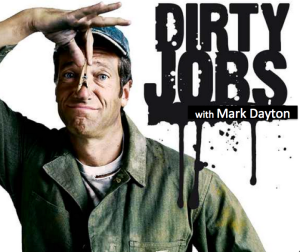 Governor Mark Dayton is Minnesota’s political version of Mike Rowe, the star of the Discovery Channel television show “Dirty Jobs.” Rowe’s show is all about him taking on difficult, disrespected and grotesque jobs that others avoid, such as being a sewer inspector, road kill scavenger, worm dung farmer, shark repellent tester, maggot farmer, and sea lamprey exterminator. Who knew that worm dung needed farming?
Governor Mark Dayton is Minnesota’s political version of Mike Rowe, the star of the Discovery Channel television show “Dirty Jobs.” Rowe’s show is all about him taking on difficult, disrespected and grotesque jobs that others avoid, such as being a sewer inspector, road kill scavenger, worm dung farmer, shark repellent tester, maggot farmer, and sea lamprey exterminator. Who knew that worm dung needed farming?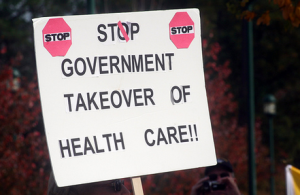 On the heels of the closing of the second year of open enrollment for Obamacare coverage, expect to hear a lot of “government takeover of health care” ranting from conservatives.
On the heels of the closing of the second year of open enrollment for Obamacare coverage, expect to hear a lot of “government takeover of health care” ranting from conservatives.
 One of the things that you can usually expect Republicans to be consistent about is faith in market forces. They’re continually reminding us that we should trust market forces to allocate resources, as opposed to having politicians arbitrarily setting prices and picking winners and losers.
One of the things that you can usually expect Republicans to be consistent about is faith in market forces. They’re continually reminding us that we should trust market forces to allocate resources, as opposed to having politicians arbitrarily setting prices and picking winners and losers. Minnesota has the best quality of life of in the nation, and we must bribe seniors to stop them from escaping it, say two stories from today’s news coverage.
Minnesota has the best quality of life of in the nation, and we must bribe seniors to stop them from escaping it, say two stories from today’s news coverage. Anybody who has followed my lunatic rantings knows that I’m an unabashed wealth redistributin’, Wall Street regulatin’, minority rightsin’, carbon tradin’, Keynesian spendin’, Medicare-for-Allin’, tree-huggin’, consumer protectin’, Pentagon cuttin’, infrastructure rebuildin’, union supportin’, monopoly bustin’, education investin’ liberal.
Anybody who has followed my lunatic rantings knows that I’m an unabashed wealth redistributin’, Wall Street regulatin’, minority rightsin’, carbon tradin’, Keynesian spendin’, Medicare-for-Allin’, tree-huggin’, consumer protectin’, Pentagon cuttin’, infrastructure rebuildin’, union supportin’, monopoly bustin’, education investin’ liberal.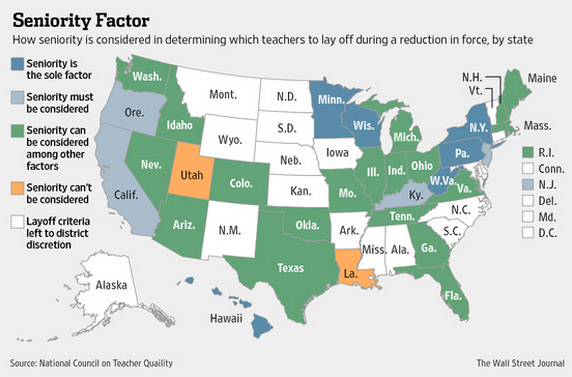 A talented young teacher who is successfully improving kids’ learning automatically should be mandated to be the first to be fired? That’s putting kids first? That’s pro-teacher? That’s pro-education? That’s respecting the teaching profession? That’s helping struggling low-income school districts, who have a disproportionate share of younger teachers? That’s liberal?
A talented young teacher who is successfully improving kids’ learning automatically should be mandated to be the first to be fired? That’s putting kids first? That’s pro-teacher? That’s pro-education? That’s respecting the teaching profession? That’s helping struggling low-income school districts, who have a disproportionate share of younger teachers? That’s liberal? It sounds simplistic, but I think it would help a lot if legislators had their offices together, so that every other office was a different political party. They’d come out and talk to each other. In the House it’s a floor separating them.
It sounds simplistic, but I think it would help a lot if legislators had their offices together, so that every other office was a different political party. They’d come out and talk to each other. In the House it’s a floor separating them. Would having Democrats and Republicans in every other office automatically lead to a grand new era of bipartisan peace, love and understanding? Nope. But it would almost certainly lead to more hallway conversations: “What are you doing this weekend?” “How’s your family?” “Can we borrow a chair for an hour?” “Cold enough for ya? “How about them Twins?”
Would having Democrats and Republicans in every other office automatically lead to a grand new era of bipartisan peace, love and understanding? Nope. But it would almost certainly lead to more hallway conversations: “What are you doing this weekend?” “How’s your family?” “Can we borrow a chair for an hour?” “Cold enough for ya? “How about them Twins?” You know what I’m talking about. Those gorgeous families perpetually promoting their endless vacations to balmy locations. Those bronzed boasters photographing their grotesque toes wiggling contentedly in the foreground of an idyllic beach. Those smug snowbirds constantly reminding you that they have ample time and money to spend the winter months engaged in poolside bingo marathons. Worst of all, those Minnesota expatriates who provide constant updates about the temperature differential between their old and new home states. Traitors!
You know what I’m talking about. Those gorgeous families perpetually promoting their endless vacations to balmy locations. Those bronzed boasters photographing their grotesque toes wiggling contentedly in the foreground of an idyllic beach. Those smug snowbirds constantly reminding you that they have ample time and money to spend the winter months engaged in poolside bingo marathons. Worst of all, those Minnesota expatriates who provide constant updates about the temperature differential between their old and new home states. Traitors! Think I’m over-reacting? Well, I’ll have you know that Seasonal Affective Disorder (SAD) plagues millions of citizens in northern states, causing us to stare catatonically into full-spectrum lights, binge on Vitamin D supplements, huff ionized air, and go bankrupt buying crap from garden, golf and fishing catalogs that we can only use a few weeks out of the year. You think that’s fun?
Think I’m over-reacting? Well, I’ll have you know that Seasonal Affective Disorder (SAD) plagues millions of citizens in northern states, causing us to stare catatonically into full-spectrum lights, binge on Vitamin D supplements, huff ionized air, and go bankrupt buying crap from garden, golf and fishing catalogs that we can only use a few weeks out of the year. You think that’s fun? In the wake of Minnesota Vikings punter Chris Kluwe’s advocacy of gay marriage, Vikings Special Teams Coach Mike Priefer publicly said he was tired of Kluwe-related distractions, privately told Kluwe that the gays should be rounded up and nuked, and fired Kluwe and replaced him with an untested rookie.
In the wake of Minnesota Vikings punter Chris Kluwe’s advocacy of gay marriage, Vikings Special Teams Coach Mike Priefer publicly said he was tired of Kluwe-related distractions, privately told Kluwe that the gays should be rounded up and nuked, and fired Kluwe and replaced him with an untested rookie.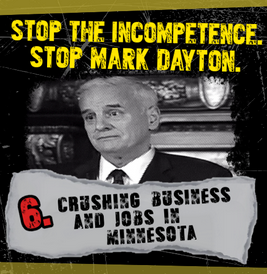

 The new Minnesota Vikings Stadium will be
The new Minnesota Vikings Stadium will be 
 Whether or not you think there was probable cause to indict white police officers accused in Ferguson, Cleveland and/or Staten Island, most of us agree that those were cases of very bad police work. Police officers have a difficult job, but it’s reasonable for citizens to expect that officers avoid escalating confrontations and rushing to use deadly force.
Whether or not you think there was probable cause to indict white police officers accused in Ferguson, Cleveland and/or Staten Island, most of us agree that those were cases of very bad police work. Police officers have a difficult job, but it’s reasonable for citizens to expect that officers avoid escalating confrontations and rushing to use deadly force. There isn’t a whole lot to Thanksgiving. A day off, a parade, a big meal and a couple of usually boring football games. No breathtaking gifts, costumes, or fireworks.
There isn’t a whole lot to Thanksgiving. A day off, a parade, a big meal and a couple of usually boring football games. No breathtaking gifts, costumes, or fireworks.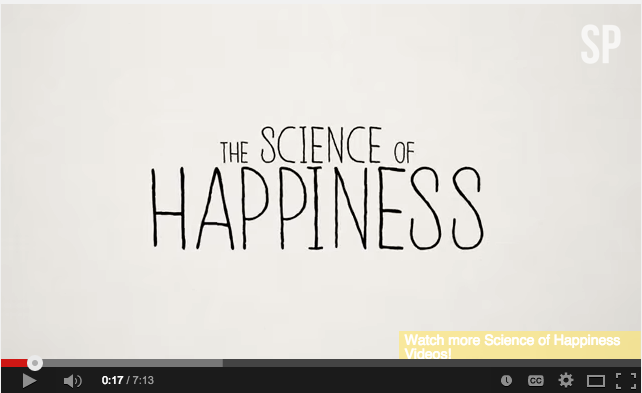
 Veteran Twin Cities political reporter Jim Ragsdale was smart, decent, savvy, warm, and oh-so witty. Pancreatic fucking cancer got him today at 64 years old, and I’m going to miss him like mad.
Veteran Twin Cities political reporter Jim Ragsdale was smart, decent, savvy, warm, and oh-so witty. Pancreatic fucking cancer got him today at 64 years old, and I’m going to miss him like mad. Minnesota Republicans captured control of the Minnesota House of Representatives in part by fueling urban versus rural resentment: “Those metro-centric DFLers give everything to Minneapolis and St. Paul.” The truth is, turnout trends associated with non-presidential year elections were a
Minnesota Republicans captured control of the Minnesota House of Representatives in part by fueling urban versus rural resentment: “Those metro-centric DFLers give everything to Minneapolis and St. Paul.” The truth is, turnout trends associated with non-presidential year elections were a  The 120,000 Minnesota small donors who heroically pulled together to pool an
The 120,000 Minnesota small donors who heroically pulled together to pool an  I can’t see into the heads and hearts of KSTP-TV reporter Jay Koll’s and his editors, so I can’t tell you if
I can’t see into the heads and hearts of KSTP-TV reporter Jay Koll’s and his editors, so I can’t tell you if 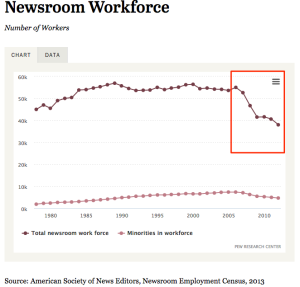 The Newsroom’s First Rule of Motion has always been a force, but it has become much more of a force since news organizations starting losing lots of money, and
The Newsroom’s First Rule of Motion has always been a force, but it has become much more of a force since news organizations starting losing lots of money, and  Here’s how: About 18% of South Dakotans who currently say they will vote for former Republican U.S. Senator Larry Pressler are making it impossible for second place Democrat Rick Weiland to get enough of the anti-Rounds votes to defeat Rounds. Even though polls consistently show Pressler is running a distant third, some swing voters have been attracted to Pressler, in part because he has promoted himself as the only member of Congress who was cleared during the
Here’s how: About 18% of South Dakotans who currently say they will vote for former Republican U.S. Senator Larry Pressler are making it impossible for second place Democrat Rick Weiland to get enough of the anti-Rounds votes to defeat Rounds. Even though polls consistently show Pressler is running a distant third, some swing voters have been attracted to Pressler, in part because he has promoted himself as the only member of Congress who was cleared during the 